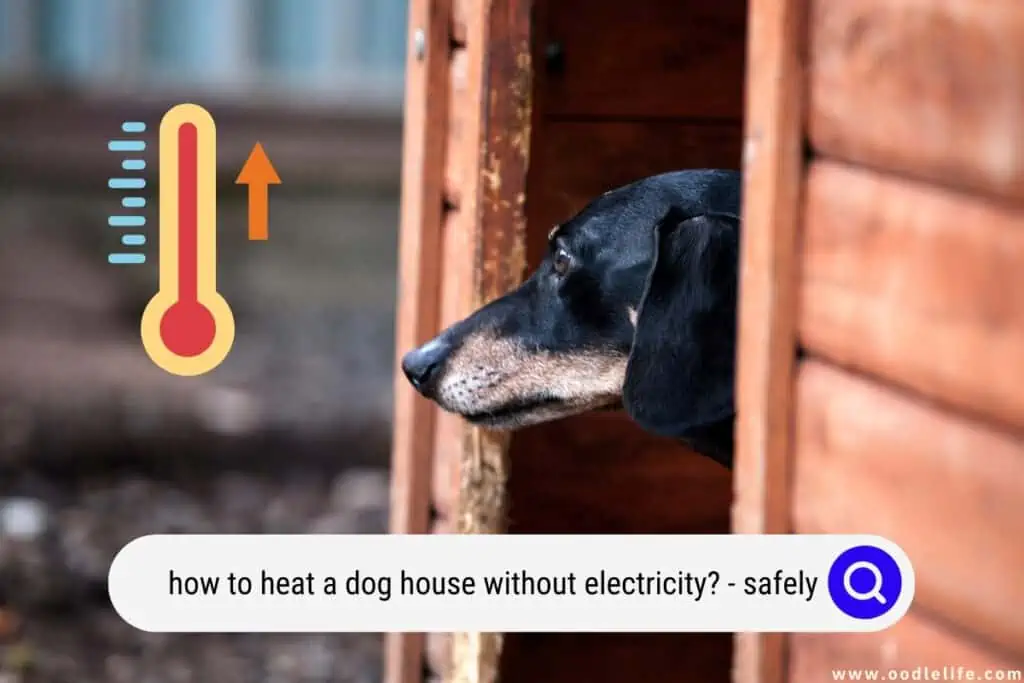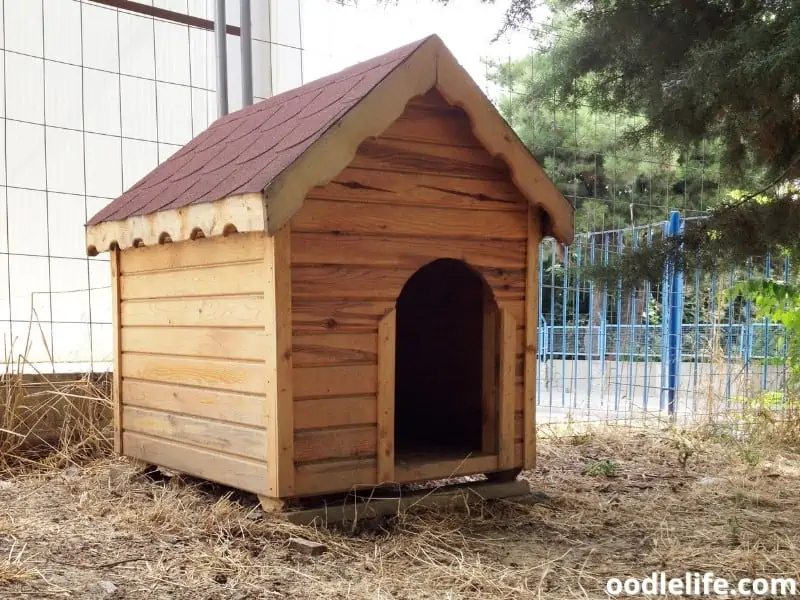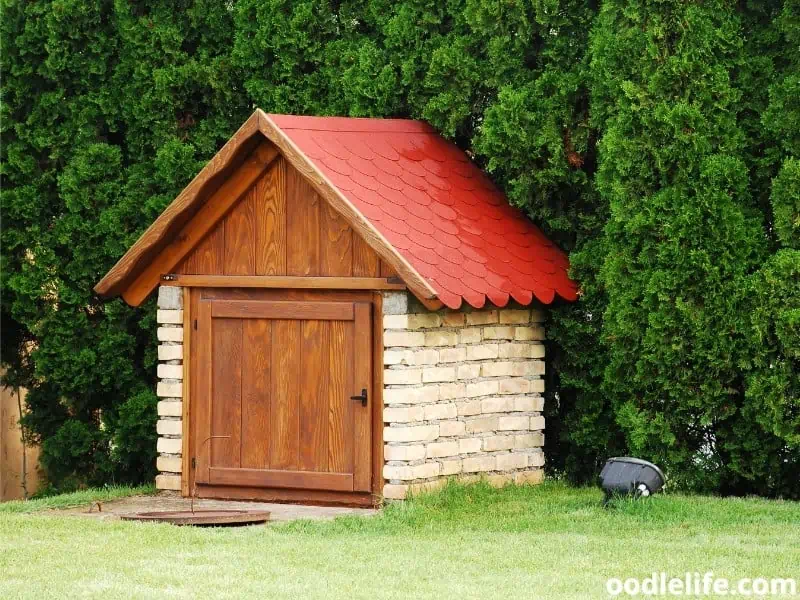How to Heat a Dog House Without Electricity? (Safely)
Dogs are known for being able to adapt to the cold, but that doesn’t mean they enjoy it! If you have an outdoor dog and live in a cold climate, you may need to help keep them warm by heating their house. Luckily, there are lots of ways to do this without spending a lot of money.
In this blog post, we’ll look at several ways to heat a dog house without the use of electricity so your canine buddy can remain safe and warm in its den all night.

Why Not Use Electricity?
Dogs are chewers, and electrical cables running everywhere in their homes could spell disaster. In addition, many electrical appliances are fire hazards, and while you aren’t in the position to constantly watch your dog at night, you’ll have to make sure that their environment is the safest it can be.
In addition, gas heaters frequently use propane. There is always the potential for danger when using any type of heater, and propane heaters are no exception. One of the biggest dangers of propane heaters is the risk of carbon monoxide poisoning.
Carbon monoxide is a colorless, odorless gas that can be deadly if inhaled in large quantities.
Another potential danger of propane heaters is fire. If a propane heater is not properly maintained, the risk of a fire breaking out increases.
Why Must A Dog House Be Heated?
The ideal temperature for dogs to sleep at is between 68 and 72 degrees Fahrenheit. You can keep a thermostat in the house to monitor the temperature throughout the night. Dogs correlate warmth to security and safety, so when their sleeping areas are nice and warm, they have a better sleep.
If it is too cold outside for you to sleep, it’s too cold for your dog as well.
A dog house should be heated for several reasons.
First, a warm house will keep your dog comfortable in cold weather. Second, it will help to prevent your dog from developing respiratory problems. Third, a heated dog house will discourage pests such as fleas and ticks from taking up residence.
Lastly, it will provide a place for your dog to go when he or she needs a break from the elements, even during the day.

How To Heat A Dog House Without Electricity?
There are electric dog houses that can provide warmth without messy, dangerous cables. However, this might not be the most cost-effective option for many people, as they tend to cost a pretty penny. In addition, they won’t work if your electricity supply is cut off for whatever reason.
There are other ways to provide some protection from the cold in the dog house.
1. Provide plenty of bedding
Just like we love snuggling under thick covers on a cold night, our dogs love having insulating bedding. Not only will this provide a layer of warmth, but it will also help to block drafts. When choosing the bedding, look for materials that are dense and bulky, such as wool or cotton.
Avoid using synthetic fibers, as these won’t trap heat as effectively.
Once you’ve selected the right bedding, simply line the inside of the dog house with it. This will create a cozy space for your pet to relax in while keeping out the cold.
Dogs are susceptible to cold weather just like humans, and their body temperature can drop quickly if they’re not properly protected from the elements.

2. Use solar panels
Naturally powering up your dog house can be done by using solar panels and attaching them to the roof of the dog house, where the dog can not reach or chew it. Solar panels capture heat from the sun and keep the internal temperature of the house warm all day.
Make sure to keep the dog house in the sun’s path or somewhere where it is bright and sunny during the day so that the dog house can warm up naturally with the help of sunlight.

3. Raising the house off the ground
The ground can be a source of heat, but it can also be a source of cold. By raising the level of the house mere inches off the ground, you’ll be providing another layer of insulation. You can also stuff the gap between the dog house and the ground with straw or hay to provide more insulation.

4. Heating pad
Using a heating pad or a warmer on the inside of the dog house is also a good solution during the chilly weather. You can also make DIY warmers by using thick socks and filling them with uncooked rice then heating them in the microwave whenever necessary for extra warmth around your dogs’ bedding.

5. Insulation
Insulation can be done using a foam board, aluminum foil bubble insulation, or rolls of fiberglass in the dog house to cover up any gaps and holes and provide a warmer environment inside of the house.
Insulation should be done to the floors, walls, and ceiling and should be covered by another layer of plywood so that your dog doesn’t chew the insulation as it may be harmful to them. 1-inch-thick foam boards are best for insulation within the walls, floors, and ceiling but since the floor tends to be the coldest area, a carpet would too, be a good idea for a less effective but cheap form of insulation.

6. Thermal bedding
An inexpensive but convenient way to keep your dog warm in his dog house is by having him sleep on thermal bedding instead of normal bedding. The benefit of thermal bedding is that the natural heat that emits from your dog’s body gets trapped inside the thermal bedding and then radiates out, keeping the bedding nice and warm.

7. Cover gaps
Cover the gaps with something your dog will not end up chewing like wood instead of foam. This way, any cold air entering the dog house will be restricted and the internal condition will be warm.

8. Battery-operated heater
Instead of using an electric heater due to the dangers of your dog chewing the cables, use a battery-operated heater. You might need to frequently change the batteries but it is better than having hazards of cable wires.
Be careful though! Many of these heaters are underpowered for a dog house, and those that are might get too hot, potentially hurting your dog if they fall asleep against it.

9. Orientate the door
Most dog houses don’t have a door that opens and closes and instead have just an opening to enter and exit from. Make a door for your dog’s dog house so that any cold air can be blocked from entering the dog house and this will keep it much warmer.
Also, make sure your dog house door isn’t facing the direction of the wind, and keep the back of the dog house against the direction of the wind to prevent any cool air from blowing into the dog house.

10. Hay bedding
Hay bedding is also a good way to keep your dogs’ bedding warm. Using simple hay grass under your dogs’ bedding is a really good way to keep their bedding warm but keep in mind, that you must change the hay every two to three days as it will start to decompose and attract fleas and other creepy crawlies.
Monitor for hay allergies as well if your pup is sensitive.

11. Paint it a dark color
When it comes to absorbing heat, dark colors are far more efficient than light colors. This is because dark colors absorb more light across the entire spectrum of visible light, while light colors reflect most light away.
In addition, dark colors also absorb more infrared radiation, which is invisible to the human eye but felt as heat. As a result, darker objects tend to be warmer to the touch than lighter objects. For example, by painting a roof black, it will absorb more heat from the sun and stay cooler than a white roof would.
12. Size the dog house right
Your little dog doesn’t need a house made for a Mastiff. The more space there is around the house, the more cold air can circulate and cool it down. Keeping the space small makes it way easier to keep warm with body heat and other methods.

13. Dress your dog
Some breeds have a short single coat which makes them more intolerant to the cold. If your dog is particularly susceptible, you can have them wear a jacket and boots for more comfort. Dog clothes can help to keep them warm, which is important for both their health and comfort.
Additionally, dog clothes can protect from the elements, including snow, ice, and wind.
And, if you choose the right materials, dog clothes can also help to repel water and dirt, keeping your dog cleaner and dryer. Just be sure to choose clothing that is comfortable and fits well, and remember to take them off when they come inside so they don’t get too hot.

Final Thoughts
Winter can be an uncomfortable time for most dogs, but a dream come true for some. Make sure you know your dog and its comfort zone, and stay safe, always. Good luck!